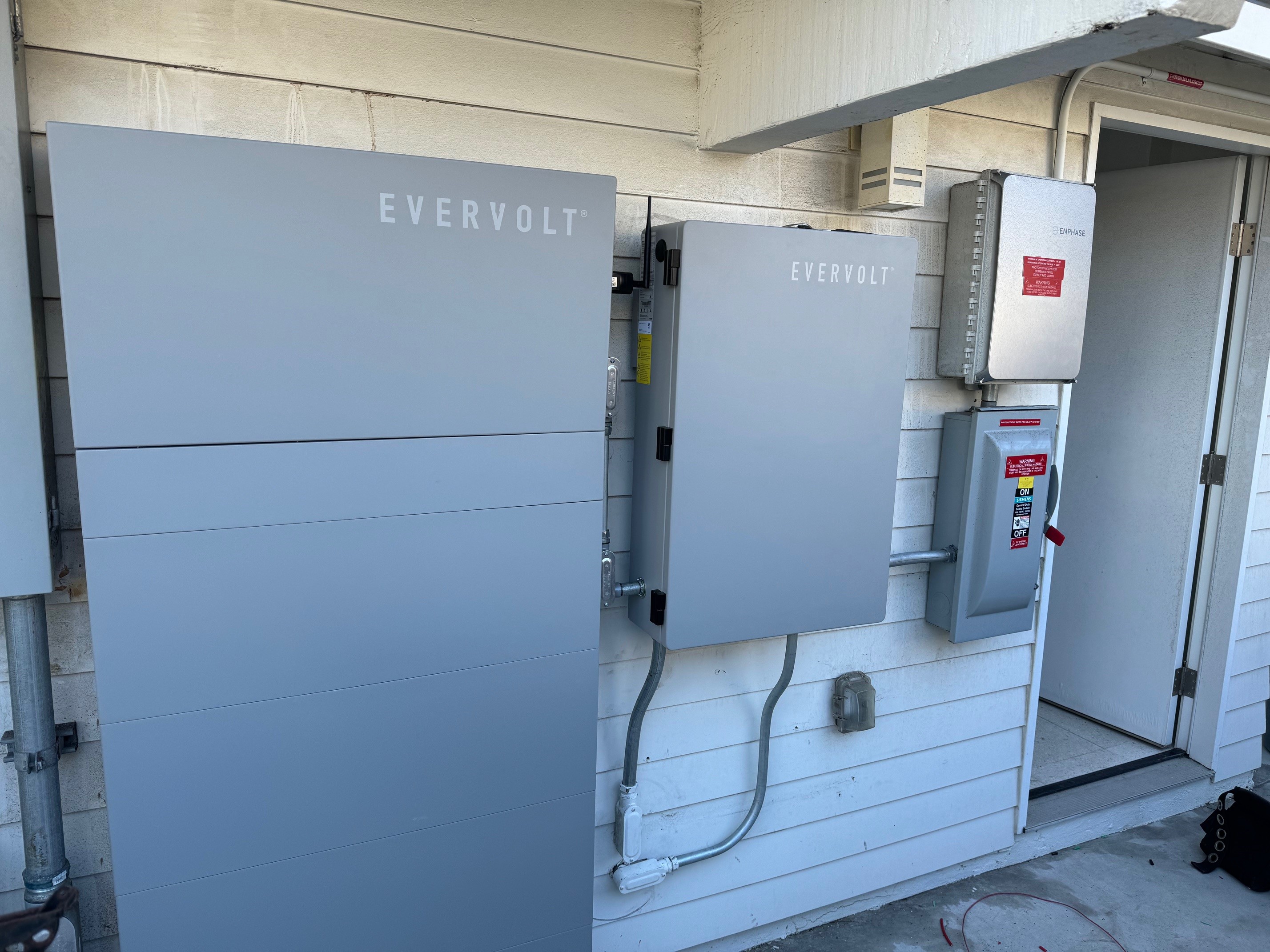As electricity prices continue to rise across the U.S., keeping energy bills low is increasingly important to homeowners. Home battery storage is a great way to keep costs down. By storing power for you to use later, a home battery system gives you more control over how much you pay for your electricity by determining when you draw from the grid.
How much you save on your monthly energy bills depends on several factors. Where you live and your existing utility pricing model are the main determinants. In general, if you spend over $150 per month on electricity, batteries can make a real difference to your bills, says David Lopez, national sales manager for solar and storage at Panasonic.
How does a home battery work?
A home battery is usually installed outside, such as in a garage or insulated shed. It integrates with your electric system and solar panels (if you have them). This means a battery will receive charge either from the grid, from solar panels, or both. You can use the stored power in your battery whenever you need, whether that's during a power outage or when grid electricity rates rise.
Most home batteries automatically switch on when they detect a grid failure. You can also schedule your battery to turn on and off throughout the day. That way, you can avoid using electricity from your utility when rates are at their highest.
How much does a home battery cost?
The average cost of a single home battery is about $12,000, including installation, says Lopez. That may sound like a large investment, but the federal Residential Clean Energy Credit brings that price down by 30%, to about $8,400. The credit is available to all US homeowners until 2032, and if your tax liability falls short of your credit in the first year, you can roll it over to offset future tax bills.
Many homeowners can also combine the federal tax credit with other state or local incentives. The Maryland Energy Storage Income Tax Credit, for example, knocks another 30% off the total cost of a battery up to $5,000. Working with a reputable local installer will ensure you receive any incentives you're eligible for.
Photo courtesy of Panasonic Eco Systems and ForMe Solar
How much money can I save on energy with a home battery?
Between incentives and strategic use, batteries will reduce homeowners’ monthly energy bills. But by how much? Let's take a look.
If you're on a time-of-use (TOU) plan: Save up to 50% a month on your energy bills
Homeowners on a TOU plan with their utility pay more for electricity during times of high demand, which can vary by season, day of week, and time of day. In some areas, TOU rates can be as much as double rates at non-TOU times, notes Lopez.
TOU plans allow homeowners to store electricity when rates are cheap and use it when rates rise. By scheduling your battery to feed your appliances when grid rates peak, you can avoid paying the higher rates.
"Homeowners on a TOU plan can save anywhere between 30% to 50% on their monthly energy bills with a home battery," shares Lopez. In California, where the average bill is $250 to $350 per month, this translates to savings of about $120 to $130 per month.
If you install solar panels with your battery: Double your monthly bill savings
Pairing your battery with rooftop solar panels can double your monthly savings, says Lopez. When you install panels, you generate electricity from the sun — for free. This electricity can be stored in your battery and used at another time, such as when grid electricity prices rise or when the sun goes down.
Solar-plus-storage takes just six to nine years to pay for itself. Exactly how long it takes depends on where you live and how many incentives you're eligible for. And that's without accounting for inflation and rising electricity prices. "At the end of the day, as electricity becomes more expensive, it's like fixing your electricity cost from the day you install solar-plus-storage," says Lopez.
If you join a demand response program: Get paid to share your power
Electrification is straining an already aging grid, as homeowners install electric appliances that are smarter and more environmentally friendly. This means homes are using more electricity than the grid was originally designed to support, forcing utilities to develop new ways to ease the pressure. One of these is through demand response programs.
Under a demand response program, the utility pays its customers to use electricity from their battery during times of high demand, to reduce the burden on the grid. These payments can be either upfront lump sums to lower the cost of buying a battery, or performance-related incentives. Upfront payments can be $3,500 or more, says Lopez. Performance incentives can shave at least $100 a month off your energy bills.
"Homes with batteries are becoming virtual power plants," says Lopez. "If we can get all the batteries from the residential homes connected, the utility can use those batteries to support the grid. Then these programs are going to become even more popular with utilities," he adds. "I think we're going to see more demand response programs everywhere."
Electrify your home and add solar panels: Eliminate your monthly bills
Switching your gas appliances to electric, and powering them with energy from your solar panels and a battery can significantly lower your energy bills and in some cases, eliminate them altogether. Lopez says he has converted his entire house to electric, including the water heater, air conditioning system and dryer. He's also got an electric vehicle. "We're pretty much net zero and don't spend any money on gas," he notes. "We drive for free, heat the house for free, cool the house for free and cook for free."
A home battery with or without solar panels can feel like a big investment. But it is an investment that will eventually pay for itself and can lead to long-term savings. When you're ready to make the switch, an authorized Panasonic installer can help get you started.





